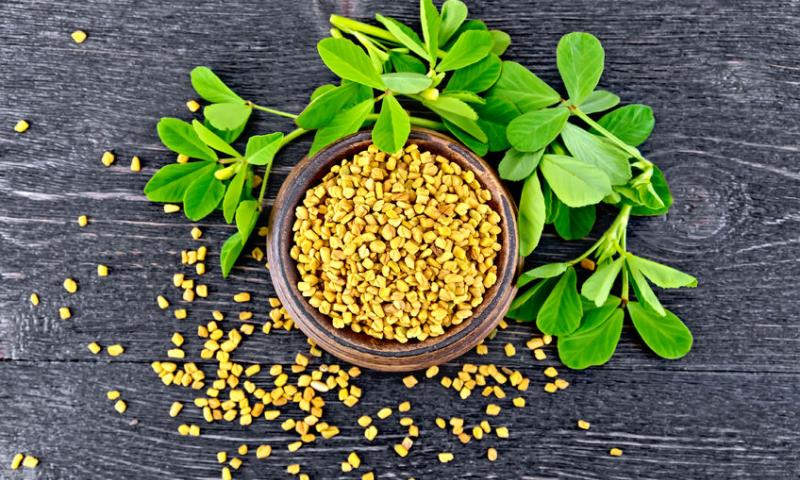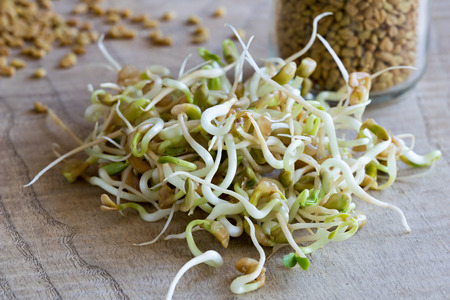 />
/>
LATIN NAME: Trigonella foenum-graecum
FAMILY: Fabaceae
GENUS: Trigonella
ORIGIN: is native to the Middle and Near East
DISTRIBUTION AREA: it grows in Eastern Europe, the Caucasus, in the mountainous areas of Turkey, Iraq, Iran and Central Asia, is also found in Egypt and Ethiopia, is widely used in the Indian subcontinent
HABITAT: prefers sunny places with clay soil
BOTANICAL INFORMATION: Plant is up to 60 cm height with alternate triple-complex leaves of 2 cm long. The leaves are of ovoid shape. The stem is branchy, roundish with a taproot. Flowers are sessile, very small, yellowish white, and at the base light-violet. The plant blooms from May to June. Flowers produce long (up to 10 cm) narrow (4-5 mm thick) bare or slightly hairy beans with hard rectangular seeds.

CHEMICAL COMPOSITION
Fenugreek includes:
- proteins
- amino acids
- flavonoids
- saponins
- steroidal saponins
- coumarin
- lipids
- vitamins
- minerals
- galactomannan fiber
- alkaloids, such as trigonelline
"Fenugreek, Tuesday's spice, when the air is green like mosses after rain."
Chitra Banerjee Divakaruni
*This article is for informational purposes only. We suggest consulting with a physician before using these or any other herbal supplements.
